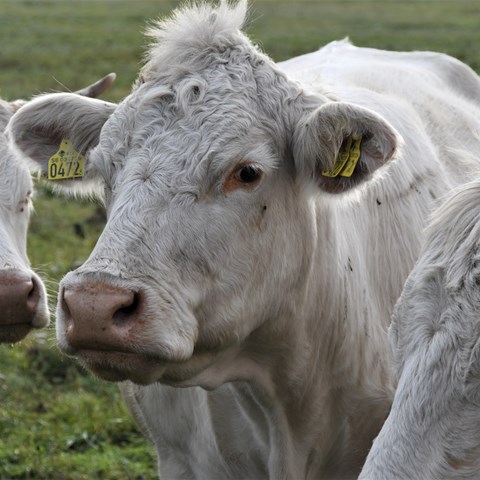Facts:
Project leader: Maria Vilain Rørvang, BT, SLU
Project partner: Jenny Yngvesson and Johanna Stenfelt (student)
Funding: Graméns fund, SLU
Period: 2021-2022

The project investigates aspects of ‘social transmission mechanisms in cow-cow learning situations, which are currently unknown.
Social cognition in cattle is a sparsely studied area and as a result we currently don’t know much about how cattle learn from each other. It has been pointed out by several authors that knowledge on this topic is crucial in order to shed light on how cows learn and navigate their social environment (e.g. Phillips 2010; Rørvang 2018; Nawroth et al. 2019). In this project we will investigate social transmission between cows in a) a spatial detour test and b) a fear test. In a) cows will either watch a trained cow walk through a simple maze to a feed bucket or not observe the route demonstrated, and the hypothesis is that cows who watch the route demonstrated will be quicker to find the feed bucket and also use the same route when walking to the bucket. In b) cows will be exposed to a fear eliciting situation: The sudden opening of a colourful umbrella three times, and in this situation they will either be accompanied with a trained, calm and old companion or an untrained but old companion. The hypothesis is that cows with a trained companion will react less fearful. These results will help us understand how our dairy cows learn from each other and shed light onto the possibilities of using these abilities in the practical management of cattle. For example, if fear reactions in the cattle group can be socially attenuated, it may be possible to include just one trained cow to lower the general fear of the group. This is important as fearful cattle are a main source of accidents in the production and hence lowering the fear of the group (not just the individuals) are of high importance.
Project leader: Maria Vilain Rørvang, BT, SLU
Project partner: Jenny Yngvesson and Johanna Stenfelt (student)
Funding: Graméns fund, SLU
Period: 2021-2022